#french government scholarship
Text
France Scholarships 2023 | Fully Funded- Apply Now
France Scholarships 2023 | Fully Funded- Apply Now
All international applicants get ready to start applying for the Fully Funded France Scholarships 2023. The Scholarships in France for the 2023/24 intake are open. You can apply for the Bachelors, Masters, and PhD Degree programs in France. The French Scholarships are Fully Funded by the Ministry of Foreign Affairs, France. This is a Season of Scholarships. France is a European country and is…

View On WordPress
#AEFE scholarship#Campus France scholarship#Eiffel scholarship#France Scholarship 2023#France Scholarships 2023 | Fully Funded- Apply Now#French Embassy scholarship 2021#French Government Scholarship#French Language Scholarship in Canada#French language Scholarship in France#Fully Funded Scholarship in France#Fully Funded Scholarships in France for International students 2021#Fully Funded Scholarships in France for international students 2023#Fully Funded Undergraduate Scholarships in France for International students 2022#Undergraduate scholarship in France#University of Paris scholarships
0 notes
Text
International Selection Scholarships by École Normale Supérieure France
International Selection Scholarships by École Normale Supérieure France
International Selection Scholarships by École Normale Supérieure France: The Ecole normale supérieure aims at varying its students’ profiles and incorporates students to be enrolled in the 3rd year of bachelor (license 3) or 1st year of master (master 1), coming from all over the world and from all disciplines. The competitive examination of the International selection is intended for young…

View On WordPress
#Eiffel Scholarships in France for International Students#France Scholarships 2022#France Scholarships 2023#French government Scholarships for International Students#French language Scholarship#Fully Funded Masters Scholarships for Developing Countries#Fully Funded Masters Scholarships for Developing Countries 2023-2024#International Masters Scholarships#Masters Scholarships 2023#Masters Scholarships 2023-2024#Masters Scholarships 2024#Masters Scholarships for African Students#Masters Scholarships for Developing Countries#Scholarships in France for International Students 2022#Undergraduate Scholarships in France for International Students
0 notes
Text
Hey
I know there are many, many things happening in the world right now and there is only so much time, energy and money people can invest in social justice but with the advance of fascism in Europe - 84 fascists from 12 different countries were elected to the European Parliament this year - and with the news of a 15yo Romani teenager dying during a police confrontation in England last week, I have compiled a list of different human rights organizations dedicated to helping Romani people in Europe.
Please donate if you can!
💙❤️💚🦔💙❤️💚🦔💙❤️💚🦔💙❤️💚🦔💙❤️💚🦔💙❤️
🇪🇺 Roma Education Fund
The Roma Education Fund (REF) is an international foundation established in 2005 and dedicated to closing the gap in educational outcomes between Roma and non-Roma. With an active and growing network of representative offices across Central, Eastern, South Eastern Europe and Turkey, REF provides grants and scholarships to entities and individuals who share its belief in quality, inclusive education and desegregated schools and classrooms. The Roma Education Fund is active in countries such as: Hungary, Montenegro, Romania, Serbia, Slovakia, Switzerland, Albania, Croatia, North Macedonia, Turkey, Bulgaria, Bosnia and Herzegovina, Kosovo and Russia.
🇪🇺 European Roma Grassroots Organization (ERGO)
ERGO Network mobilizes and connects grassroots, national and international organisations and individuals who share a set of core values to create the courage, capacity and opportunities to combat antigypsyism and Roma poverty; strengthen Roma civil society participation in decision-making at grassroots, national and European level and commit governments and European institutions to effective social inclusion and anti-discrimination policies, standards and funds for Roma.
🇪🇺 European Roma Rights Center (ERRC)
The ERRC is the largest transnational Romani rights organization in Europe. They provide judicial and financial help to Romani people facing poverty, police brutality and racist violence all across Europe
🇷🇴 Resource Center for Roma Communities Foundation (RCRC)
The operational activity of RCRC includes training programs, consultancy and comprehensive community development in Roma communities. The grantmaking activity of RCRC has involved managing grants and scholarship programs, including the administration of the European Union’s and EAA grants programs focused on health, vocational training, small infrastructure and income generating activities.
🇨🇿 Cesta Von
Cesta von (This Way Out) organization is based in Slovakia. Their Omama program works with the very youngest Romani children in particular. Their aim is a big and important one – extricating the inhabitants of the segregated settlements from the vicious circle of intergenerational poverty. The program targets the development of the intellect, motor skills and social skills in an attempt to increase the chances of children from socially excluded localities at living better adult lives. One of the main conditions for choosing the Omamas is that they must be Romani women who know the excluded locality well (source).
🇪🇸 La Fundación Secretariado Gitano (FSG)
The FSG develops all kinds of actions that contribute to achieving the full citizenship of Roma persons, improving their living conditions, promoting equal treatment and preventing all forms of discrimination, as well as promoting the recognition of the cultural identity of the Roma community.
🇪🇸 La Asociación Nacional Presencia Gitana
Presencia Gitana is dedicated to confronting and correcting negative opinions about Spanish Romani people. They promote all kinds of initiatives and projects to ensure that Spanish Romani people's basic needs and fundamental rights are met and guaranteed, work to promoting Romani culture and advocate for the providing of historical reparation for Spanish Romani people.
🇫🇷 ANGVC
The ANGVC (association nationale gens du voyage citoyens) is a French Romani-led organization whose goal is to fight anti-Romani racism and to improve the living conditions of French Romani people and travellers. They provide judicial help to Romani people victims of environmental racism and police brutality, organize workshops to raise awareness about anti-Romani racism and are now leading a project dedicated to educate people about the Romani genocide, which still hasn't been recognized by France.
🇬🇧 Roma Support Group
The Roma Support Group offers free advice for Roma communities on financial inclusion, debt, welfare benefits and housing. They promote Romani arts and culture, fight for the improvement of mental health within the Romani community and helps Romani people victims of racism.
🇬🇧 Romano Lav
Romano Lav is a grassroots Roma community organisation based in Govanhill, Glasgow. They organize youth-led events including artistic and cultural performances, workshops, exhibitions and educational events.
🇬🇧 Luton Roma Trust
The Luton Roma Trust provides advice to British Romani people about housing, employment and education, helps them find jobs and accessing healthcare.
💙❤️💚🦔💙❤️💚🦔💙❤️💚🦔💙❤️💚🦔💙❤️💚🦔💙❤️
247 notes
·
View notes
Text
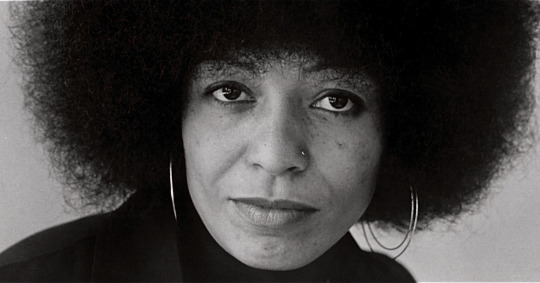
Today In History
Angela Davis, political activist, philosopher, academic, and author was born in Birmingham, AL, on this date January 26, 1944.
Davis knew about racial prejudice from a young age; her neighborhood in Birmingham was nicknamed “Dynamite Hill” for the number of homes targeted by the Ku Klux Klan. She also knew several of the young African American girls killed in the Birmingham church bombing of 1963.
Angela earned a scholarship to study French Literature at Brandeis University in Massachusetts. After graduation, she studied in Germany and completed a PhD in philosophy.
In 1969, Angela became a professor of philosophy at the University of California at Los Angeles. Governor of California Ronald Reagan learned about Angela’s political connections and pressured the university to fire her. Angela fought back, and took her case to court. The Supreme Court of California ruled Angela could not be banned for party affiliation. However, several months later, the university found another reason to fire her. They claimed that her comments in recent speeches were too politically incendiary.
Around the same time that Angela lost her job, she became involved in the Soledad Brothers Defense Committee. On August 7, 1970, an armed gunman and brother of one of the Soledad Brothers entered a courtroom in California and took several people hostage. An investigation revealed that the gunman used a weapon Angela bought at a pawn shop several days earlier. Distrustful of the government, Angela went into hiding. During that time, the FBI added her to the “10 Most Wanted” list. In October, she was arrested in a hotel room in New York City. She was held in jail for 18 months.
On June 4, 1972, an all-white jury found Angela not guilty on all charges. Angela said it was the happiest day of her life.
“As a black woman, my politics and political affiliation are bound up with and flow from participation in my people’s struggle for liberation, and with the fight of oppressed people all over the world against American imperialism.”
CARTER Magazine
#angela davis#carter magazine#carter#historyandhiphop365#wherehistoryandhiphopmeet#history#cartermagazine#today in history#staywoke#blackhistory#blackhistorymonth
175 notes
·
View notes
Text



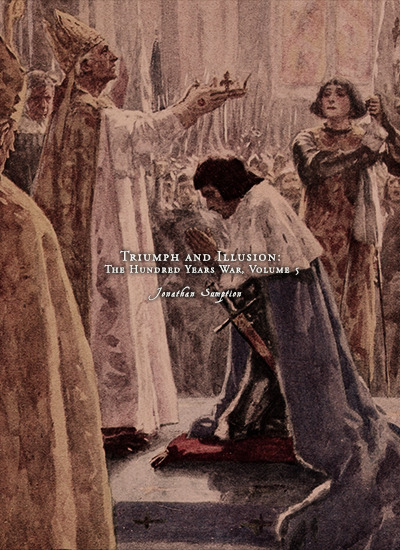
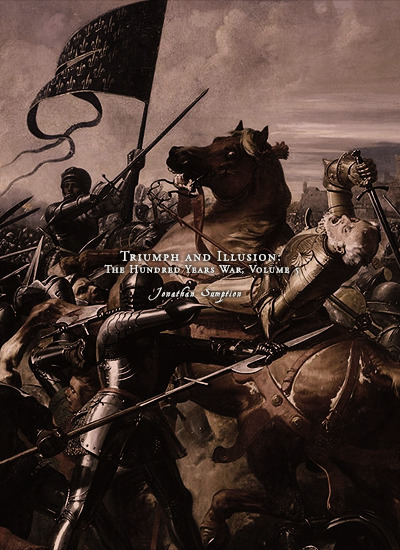
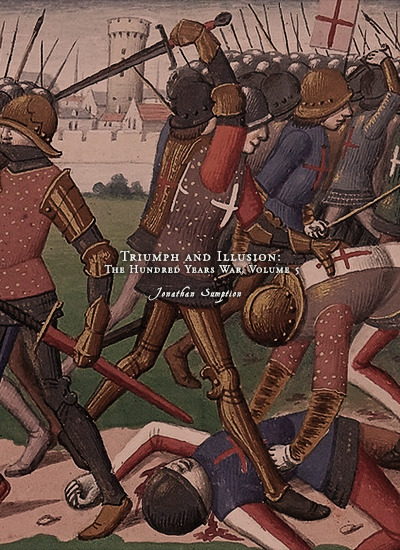
Favorite History Books || Triumph and Illusion: The Hundred Years War Volume 5 by Jonathan Sumption ★★★★☆
The wheel of fortune is one of the most ancient symbols of mankind, an image of capricious fate and the transience of human affairs. In the late middle ages it was everywhere, in illuminated manuscripts, in wall paintings and stained glass, in sermons and homilies, in poetry and prose. ‘The wheel of fortune turneth as a ball, sudden climbing axeth a sudden fall,’ wrote John Lydgate in The Fall of Princes, a work commissioned by one of the dominant figures in this history, Cardinal Henry Beaufort. The present volume traces the remarkable recovery of France in barely two decades from the lowest point of its fortunes to the dominant position in Europe which it had enjoyed before the wars with England. Sudden climbing axeth a sudden fall. These years saw the collapse of the English dream of conquest in France from the opening years of the reign of Henry VI, when the battles of Cravant and Verneuil consolidated their control of most of northern France, until the loss of all their continental dominions except Calais. This sudden reversal of fortune, inexplicable to many contemporary Englishmen, was a seminal event in the history of the two principal nation-states of western Europe. It brought an end to four centuries of the English dynasty’s presence in France, separating two countries whose fortunes had once been closely intertwined. It created a new sense of identity in both of them. In large measure, the divergent fortunes of the French and English states over the following centuries flowed from these events.
The passions generated by ancient wars eventually fade, but those provoked by the wars of the English in fifteenth-century France have proved to be surprisingly durable. The foundations of scholarship on the period were laid by patriotic French historians of the nineteenth century, writing under the shadow of Waterloo and Sedan. The passage of the centuries did nothing nothing to soften their indignation about the fate of their country in the time of Henry VI and the Duke of Bedford. The extraordinary life and death of Joan of Arc defied historical objectivity until quite recently. Joan’s story became the focus of disparate but powerful political passions: nationalism, Catholicism, royalism and intermittent anglophobia. Much of what has been written falsifies history by attributing to medieval men and women the notions of another age. But myths are powerful agents of national identity. The great French historian Marc Bloch once wrote that no Frenchman could truly understand his country’s history unless he thrilled at the story of Charles VII’s coronation at Reims. Writing in the summer of 1940 in the aftermath of a terrible defeat, Bloch looked to an earlier recovery from the edge of disaster for reassurance about the survival of France.
If there is a corresponding English myth, it is in the history plays of Shakespeare. The great speeches which he gave to John of Gaunt and Henry V belong to the classic canon of English patriotism. His three plays about Henry VI, a truncated story of discord at home and defeat abroad, never reach the same heights. Yet they serve to remind us that behind the clash of arms and principles were men and women of flesh and blood. I have tried at every page to remember that they were not cardboard cut-outs. They endured hunger, saddle-sores and toothache. They experienced fear and elation, joy and disappointment, shame and pride, ambition and exhaustion. At the level of government, they were trapped by the logic of war, lacking the resources to conquer or even to defend what they had, and yet unable to make peace. It was the tragedy of the English that, after an initial surge of optimism in the 1420s, they realised that the war could not be won, but were forced to fight on by the memory of Henry V’s triumphs and the incapacity of his son, until disaster finally engulfed them.
#litedit#historyedit#hundred years' war#medieval#history books#french history#english history#european history#history#nanshe's graphics
46 notes
·
View notes
Text

Léon Damas (March 28, 1912 - April 22, 1978) was a poet, editor, diplomat, and cultural theorist who was born in Cayenne, French Guiana. He was the youngest of five children born to parents Ernest and Marie Aline Damas.
He left French Guiana to attend the prestigious Lycée Victor-Schœlcher. He attended the University of Paris. His scholarship was for the study of law, he developed an interest in the humanities and social sciences. Influenced by Andre Breton’s anti-colonial pamphlet Légitime Défense, by his encounters with the work of Harlem Renaissance poets like Claude McKay and Langston Hughes, and by the growing community of US Black expatriate writers and artists, he began to assert his identity as a poète Nègre.
He and Aimé Césaire met Léopold Sédar Senghor. The three founded the journal L’Étudiant Noir, called Négritude.
He was the first Black writer to address the impact of colonization on the psyche of the colonized. He introduced this colonial and postcolonial condition more than 20 years before philosopher Frantz Fanon would label such traits “the colonized personality”.
He was the author of nine other volumes, including five additional books of poetry, three essay collections, and one book of short stories. In addition to a writing career that spanned 40 years, he held several prominent and influential positions in military, diplomatic, and government organizations. He served in the French army during WWII. He was elected to the Chambre des Députés of the French National Assembly. He became the overseas editor for Radio France, a contributing editor on the board of the journal Presence Africaine, and a representative of the African Society of Culture for the UN Educational, Scientific, and Cultural Organization.
He traveled extensively in Africa, Latin America, the US, and the Caribbean. He settled in DC, where he accepted a visiting professorship at Georgetown University. He was offered a permanent position at Howard University, where he remained on the faculty until his death. #africanhistory365 #africanexcellence
22 notes
·
View notes
Text
Hey
I know there are many, many things happening in the world right now and there is only so much time, energy and money people can invest in social justice but with the advance of fascism in Europe - 84 fascists from 12 different countries were elected to the European Parliament this year - and with the news of a 15yo Romani teenager dying during a police confrontation in England last week, I have compiled a list of different human rights organizations dedicated to helping Romani people in Europe.
Please donate if you can!
💙❤️💚🦔💙❤️💚🦔💙❤️💚🦔💙❤️💚🦔💙❤️💚🦔💙❤️
🇪🇺 Roma Education Fund
The Roma Education Fund (REF) is an international foundation established in 2005 and dedicated to closing the gap in educational outcomes between Roma and non-Roma. With an active and growing network of representative offices across Central, Eastern, South Eastern Europe and Turkey, REF provides grants and scholarships to entities and individuals who share its belief in quality, inclusive education and desegregated schools and classrooms. The Roma Education Fund is active in countries such as: Hungary, Montenegro, Romania, Serbia, Slovakia, Switzerland, Albania, Croatia, North Macedonia, Turkey, Bulgaria, Bosnia and Herzegovina, Kosovo and Russia.
🇪🇺 European Roma Grassroots Organization (ERGO)
ERGO Network mobilizes and connects grassroots, national and international organisations and individuals who share a set of core values to create the courage, capacity and opportunities to combat antigypsyism and Roma poverty; strengthen Roma civil society participation in decision-making at grassroots, national and European level and commit governments and European institutions to effective social inclusion and anti-discrimination policies, standards and funds for Roma.
🇪🇺 European Roma Rights Center (ERRC)
The ERRC is the largest transnational Romani rights organization in Europe. They provide judicial and financial help to Romani people facing poverty, police brutality and racist violence all across Europe
🇷🇴 Resource Center for Roma Communities Foundation (RCRC)
The operational activity of RCRC includes training programs, consultancy and comprehensive community development in Roma communities. The grantmaking activity of RCRC has involved managing grants and scholarship programs, including the administration of the European Union’s and EAA grants programs focused on health, vocational training, small infrastructure and income generating activities.
🇨🇿 Cesta Von
Cesta von (This Way Out) organization is based in Slovakia. Their Omama program works with the very youngest Romani children in particular. Their aim is a big and important one – extricating the inhabitants of the segregated settlements from the vicious circle of intergenerational poverty. The program targets the development of the intellect, motor skills and social skills in an attempt to increase the chances of children from socially excluded localities at living better adult lives. One of the main conditions for choosing the Omamas is that they must be Romani women who know the excluded locality well (source).
🇪🇸 La Fundación Secretariado Gitano (FSG)
The FSG develops all kinds of actions that contribute to achieving the full citizenship of Roma persons, improving their living conditions, promoting equal treatment and preventing all forms of discrimination, as well as promoting the recognition of the cultural identity of the Roma community.
🇪🇸 La Asociación Nacional Presencia Gitana
Presencia Gitana is dedicated to confronting and correcting negative opinions about Spanish Romani people. They promote all kinds of initiatives and projects to ensure that Spanish Romani people's basic needs and fundamental rights are met and guaranteed, work to promoting Romani culture and advocate for the providing of historical reparation for Spanish Romani people.
🇫🇷 ANGVC
The ANGVC (association nationale gens du voyage citoyens) is a French Romani-led organization whose goal is to fight anti-Romani racism and to improve the living conditions of French Romani people and travellers. They provide judicial help to Romani people victims of environmental racism and police brutality, organize workshops to raise awareness about anti-Romani racism and are now leading a project dedicated to educate people about the Romani genocide, which still hasn't been recognized by France.
🇬🇧 Roma Support Group
The Roma Support Group offers free advice for Roma communities on financial inclusion, debt, welfare benefits and housing. They promote Romani arts and culture, fight for the improvement of mental health within the Romani community and helps Romani people victims of racism.
🇬🇧 Romano Lav
Romano Lav is a grassroots Roma community organisation based in Govanhill, Glasgow. They organize youth-led events including artistic and cultural performances, workshops, exhibitions and educational events.
🇬🇧 Luton Roma Trust
The Luton Roma Trust provides advice to British Romani people about housing, employment and education, helps them find jobs and accessing healthcare.
💙❤️💚🦔💙❤️💚🦔💙❤️💚🦔💙❤️💚🦔💙❤️💚🦔💙❤️
(stole this post cause ops a terf)
15 notes
·
View notes
Text

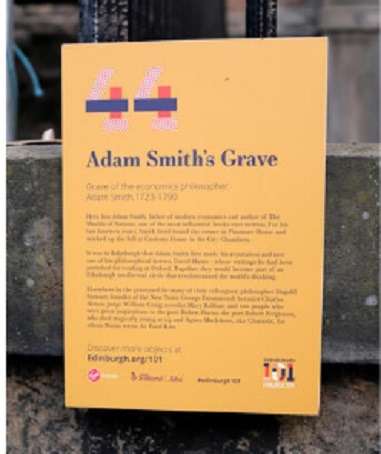

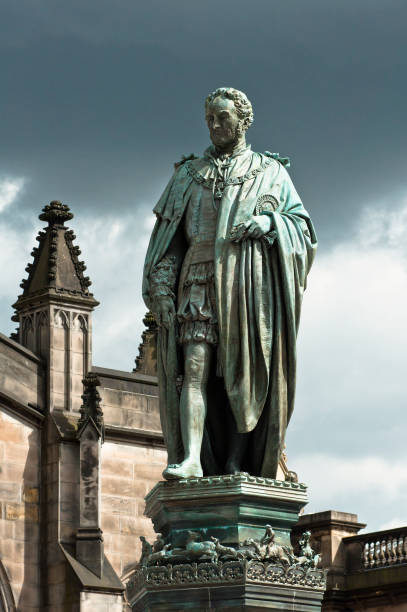
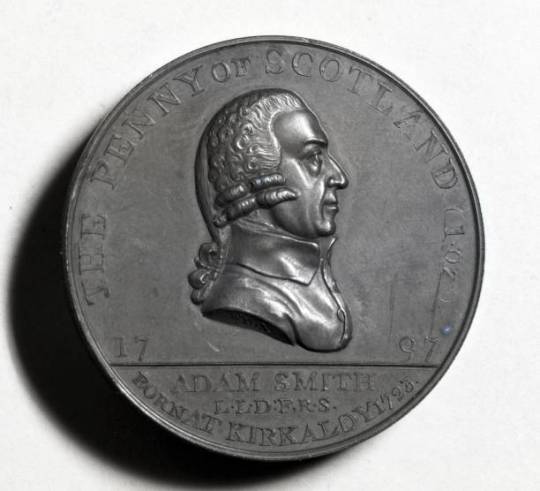
On July 17th 1790 economist, philosopher and author Adam Smith, died in Edinburgh.
Smith attended the local school where he was bought up, in Kirkcaldy, Fife before enrolling, aged 14 at Glasgow University, then a central institution in the prevailing humanist and rationalist movement which later became known as the Scottish Enlightenment. Smith cites the lively discussions led by Professor of Moral Philosophy, Francis Hutcheson, as having a profound effect on his passion for liberty, free speech and reason.
In 1740, Smith was the recipient of the Snell Exhibition, an annual scholarship allowing Glasgow University students the opportunity to take up postgraduate study at Balliol College, Oxford.
Smith’s experiences at Glasgow and Oxford were completely different. While Hutcheson had prepared his students for vigorous debate through challenging new and old ideas, at Oxford, Smith believed “the greater part of the public professors [had] given up altogether even the pretence of teaching”.
Smith was also punished for reading A Treatise of Human Nature by his later friend David Hume. Smith quit Oxford before his scholarship ended and returned to Scotland.
On his return home Adam Smith became a professor at the University of Edinburgh. It was at Edinburgh that he met David Hume.who would become one of his best friends. Over the years, Smith and Hume would discuss economics and philosophy. During this time, Smith began to formulate the ideas that would make him famous.
In 1759, Smith published The Theory of Moral Sentiments. He gained some fame for this work and was offered the job of tutor for young Duke Henry Scott. As tutor, Smith began to travel throughout much of Europe. He met many influential people including French economist Francois Quesnay and American diplomat Benjamin Franklin. Smith's theories on the economy continued to develop.
In 1776, Adam Smith published The Wealth of Nations. This book became the foundation of modern economics. It introduced and explained many economic concepts that are still used today. The most important idea in the book is the idea of the free market economy. This is where he proposes that the most productive economy is one that is allowed to regulate itself without government intervention.
Adam Smith died in Edinburgh, on this day in 1790. Today, he is known as the father of modern economics. The Wealth of Nations is one of the most influential books in history. Most countries throughout the world today operate a mixed economy that combines the free market described by Adam Smith with some government intervention.
11 notes
·
View notes
Note
Anne Boleyn wasn’t exactly a Protestant as is often said but she was a Reformist. She still held on to some of the Catholic beliefs such as the doctrine of transubstantiation but rejected papal authority, promoted erastianism and worked on getting the Bible translated into vernacular English so the common people of England could read it and understand it (The Bible was released shortly after her death, with the dedication page hastily changed to Queen Jane’s name). She wanted to purify the Catholic church of things she saw as abuses (such as the extreme wealth of the Catholic Church, and excessive accumulation of wealth in general, selling salvation — literally!) and superstitions. She’s the one who introduced Henry VIII to the idea of becoming Head of the Church of England by giving him a book written by William Tyndale, Obedience of a Christian Man, with certain passages marked by the impression of her fingernail. It was a bold move because the book was banned and had been seized by the Church when they found it in her possession. Anne asked Henry to get it back for her and read it. (Anne’s brother, George Boleyn, smuggled banned religious texts for her, purchasing them on his travels to the Continent.)
Anne sheltered religious dissidents. She saved the life of the French reformer Nicolas Bourbon as she had appealed to the French royal family to spare his life as a favor to the English Queen. Nicolas Bourbon would later refer to Anne as “the queen whom God loves.” She restored Richard Herman to the membership of the English Society of Merchants, from which Cardinal Wolsey had expelled him for his involvement in translating the New Testament into English. Anne also offered safe passage to England to French humanist reformers. She paid for scholarships so Reformist scholars could attend the universities. (Many of them stayed after they graduated to teach the next generation and spread Reformist ideas.) She personally selected six of the nine bishops appointed during her reign. She was extremely charitable and generous and sew shirts for the poor. When monasteries were dissolved, Anne advocated the redistribution of their resources and wanted to use the money to fund educational programs and other charitable causes. On the other hand, Thomas Cromwell, Henry’s chief minister, wanted to transfer these funds to the king’s coffers.
In short, religious issues were the primary focus of the work she did during her reign. Her goal for the advancement of a more tolerant religious point of view was unusual in an age that favored rigid religious practice. It’s one of the reasons she was so deeply unpopular — she was seeding “heresy” in so many areas. Eustace Chapuys, the Imperial ambassador in England, regularly complained to his home government of “the concubine” being “the cause and nurse of the spread of Lutheranism in this country”. They were right to be alarmed; Anne Boleyn’s work helped lay the foundations of the Anglican church. It would later be expanded upon by Queen Kateryn Parr, who appointed two of Anne’s scholarship students to be the tutors of Edward VI, the first Protestant monarch.
Wow. Yeah, this is displays a lot more devotion to a certain mission and a desire to change a society or a generosity that some people tried to say Alicent displays--which was never actually spelled out or claimed even in F&B, btw!--as reason for them to believe that Alicent was a good Queen or just a good person. The whole Queens-as-leads-of-charity-and-alms thing. Can't find the post.
#ask#anne boleyn#english history#the tudors#William Tyndale#henry viii#Nicolas Bourbon#Richard Herman#Cardinal Wolsey#Thomas Cromwell#Eustace Chapuys#Kateryn Parr#Edward VI#the anglican church#english reformation#anglicanism#english queens#european queens#european history
11 notes
·
View notes
Text
Women are poor; poorer than men. What is so important about 20 billion of our dollars a year (being spent on cosmetics)? It would buy us, trivially enough, each year, roughly three times the amount of day care offered by the U.S. government: or 2,000 women’s health clinics; or 75,000 women’s film, music, literature, or art festivals; or 50 women’s universities; or 1 million highly paid home support workers for the housebound elderly; or 1 million highly paid domestic or child care workers; or 33,000 battered-women’s shelters; or 2 billion tubes of contraceptive cream; or 200,000 vans for late-night safe transport; or 400,000 full four-year university scholarships for young women who cannot afford further education; or 20 million airplane tickets around the world; or 200 million five-course dinners in four-star French restaurants; or 40 million cases of Veuve Clicquot champagne. Women are poor; poor people need luxuries. Of course women should be free to buy whatever they want, but if we are going to spend our hard-earned cash, the luxuries should deliver what they promise, not simply leech guilt money. No one takes this fraud (the beauty industry shilling anti aging products) seriously because the alternative to it is the real social threat: that women will first accept their aging, then admire it, and finally enjoy it. Wasting women’s money is the calculable damage; but the damage this fraud does women through its legacy of the dread of aging is incalculable.
— Naomi Wolf (1990) The Beauty Myth
#!!!#anti beauty industry#naomi wolf#the beauty myth#radfem#radical feminism#radblr#radical feminists do interact#radical feminist safe#radical feminists do touch#radical feminists please touch#radical feminists please interact
9 notes
·
View notes
Text
The Irish Schindler: Mary Elmes
Hid children in the trunk of her car.
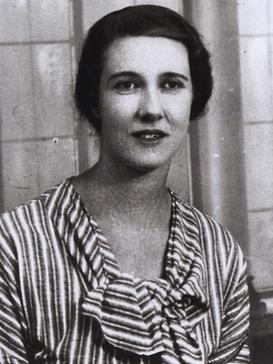
Mary Elmes was an Irish aid worker who saved over 200 Jewish children during the Holocaust by smuggling them across the Pyrenees mountain range.
Born in Cork, Ireland in 1908, Mary was a talented student who studied French and Spanish Literature at Trinity College, Dublin. She received a scholarship to further her studies at the London School of Economics. In 1937, Mary gave up her promising career in academia to become a volunteer aid worker and help refugees fleeing the Spanish Civil War. She traveled over the Pyrenee Mountains from Spain into France, and helped procure food and educational materials for homeless Spanish children. After the war, the American Friends Service Committee (AFSC), a Quaker humanitarian group, sent Mary to Almeria, Spain to work in a children’s hospital there. After the outbreak of World War II in 1939, Mary was evacuated and sent to help out at the AFSC headquarters in Perpignan, France.
When the Nazis invaded France in 1940, Jews were targeted by the Gestapo and French police. Many of them fled to Southern France and Mary went with them and worked with the American Friends Service Committee caring for refugee children. In 1942, the Nazis started rounding up Jews en masse for deportation to Auschwitz. Mary immediately took action. She smuggled children in the trunk of her car to safety in the Pyrenees. From there, she connected them to an underground network that evacuated them to safety.
Making so many trips to and from the mountains, Mary came under suspicion, and in 1943 she was arrested by the Nazis and charged with espionage. Because Mary was an Irish citizen working for an American organization, the Irish consul in Washington intervened and was able to get her released. Her family begged her to leave France, but she refused to abandon the refugees who needed her help, and continued her aid work in France until the war ended.
Mary married a French man and had two children. She never told them of her wartime heroism. When asked about her imprisonment, she said, “Oh, we all had to suffer some inconveniences in those days!” The French government offered her its highest honor, the Legion d’Honneur, but Mary humbly declined.
She died in 2002, at age 94, never having been publicly recognized for her bravery.
Mary’s incredible story only came to light in 2012, when Professor Ronald Friend, one of the hundreds of Jewish children Mary saved, nominated her as a Righteous Among the Nations. Her family was reluctant, as Mary never wanted any attention for her wartime activities, but they finally agreed. Mary is the only Irish person to be recognized as a Righteous Gentile by Israeli Holocaust Memorial Yad Vashem.
For saving the lives of hundreds of Jewish children at great risk to herself, we honor Mary Elmes as this week’s Thursday Hero.
44 notes
·
View notes
Text

Borisov Alexander Alekseevich (1866-1934). Northern landscape. Kon. XIX - beginning. XX century. Oil on canvas.
Author's signature in the lower right corner.
Alexander Alekseevich Borisov (1866-1934) - Russian artist, the first painter of the Arctic, writer, public figure, researcher of the polar lands, who made a significant contribution to the development of issues of transport and economic development of the North.
Alexander Borisov's parents were peasants. At the age of fifteen, he came to the Solovetsky Monastery, where he worked on a fishing tone in the Savvatievsky Skete. Soon he got a job as a student in an icon painting workshop. The archimandrite of the monastery, seeing Borisov's pencil drawings, took him to the main monastery. As a novice, Alexander studied drawing and icon painting. Borisov's works were noticed by the President of the Academy of Arts Grand Duke Vladimir Alexandrovich and the famous collector of paintings, General A.A. Bogolyubov, who served at the headquarters of the St. Petersburg Military District. They helped Alexander: he was awarded a scholarship, and on September 20, 1886 he came to St. Petersburg. During the period of study at the Academy of Arts (1888-1892), Borisov's creative achievements were awarded two small and one large incentive silver medals. For "good success in art classes," the Academy Council granted Borisov's request, and since June 1892 he has been awarded a scholarship "as a state peasant." In 1895, Borisov was engaged in the workshop of I. I. Shishkin, and a year after his departure from the Academy - at A.I. Kuindzhi.
In the summer of 1894, he accompanied Sergei Witte on the steamer Lomonosov on a trip to the North. Borisov's duties included sketches of the harbors and bays of the Murmansk coast. Borisov fulfilled his dream of visiting the Arctic Ocean and began to nurture the idea of a high-latitude artistic expedition. From the trip, he brought about 150 sketches, some of which were exhibited in 1897 at the academic exhibition in St. Petersburg. These works caused admiration of V.M. Vasnetsov, approving reviews from V.V. Stasova. P.M. Tretyakov bought Borisov's works for 8,000 rubles for his collection. In 1900, Borisov and eight of his satellites went to New Earth. The expedition lasted 14 months, during which time Borisov and his comrades had to overcome many difficulties. They surveyed and mapped the shores of the bays of Chekin, the Unknown and the Bear, giving the bays, straits, mountain peaks and capes the names of artists, scientists and those who contributed to the development of the North. Thanks to Borisov, the Capes of Shishkin, Kuindzhi, Kramsky, Vasnetsov, Vereshchagin, Repin, as well as the Tretyakov glacier appeared on the map of Novaya Zemlya. The Kazi Mountains are named after the organizer of shipbuilding in Russia M.I. Kazi. In addition, travelers conducted meteorological observations, collected geological, botanical and zoological collections. One of the main results of the expedition was hundreds of sketches and sketches, which formed the basis of the monumental paintings created by Borisov upon his return from Novaya Zemlya.
The artist's works, exhibited at the spring St. Petersburg exhibitions of 1900-1905, attracted the attention of art connoisseurs not only in Russia, but also abroad. In 1902, at the invitation of the Vienna Society of Artists, Borisov organized an exhibition in the capital of Austria. Borisov's success allowed him to hold exhibitions in Berlin, Hamburg, Cologne, Dusseldorf and Paris. The French government awarded the artist the Legion of Honor. In 1907, the famous polar explorer Fridtjof Nansen visited the Borisov exhibition in London and presented the artist on behalf of the governments of Sweden and Norway with the Order of St. Olaf, and the British government awarded the artist the Order of the Bath. In 1906, Borisov took an active part in the creation of the Northern Circle of Lovers of Fine Arts, participated in the development of the charter, and then in the organization of all exhibitions of the circle (1905-1919). In early 1908, Borisov came to the United States. An exhibition of his paintings in Washington was held at the White House. Borisov became the first Russian artist to be accepted by the President of the United States. Returning to Russia, Borisov settled in his homeland, near Krasnoborsk. In the following years, he created works dedicated not only to the Arctic, but also to Solovki, Pechora, Severodvinsk lands. In February 1914, the artist organized a major exhibition in St. Petersburg.
Currently, Borisov's works are stored in the Tretyakov Gallery, the Russian Museum, the Arctic and Antarctic Museum, the Arkhangelsk Regional Museum, the Vologda Art Gallery, the Nenets Museum of Local Lore and other museums in Russia.
Litfund
3 notes
·
View notes
Text
tbh I’m relatively new to francophone scholarship on the French Revolution and I unfortunately cannot read French-- but just from skimming the autotranslations of this article by Pascale Pellerin, Algeria writer Kateb Yacine’s 1984 play, Bourgeois sans-culotte ou le specter du parc Monceau, presents as possibly one of the most compelling dramaturgical interpretations of the French terror and Maximillien Robespierre’s historical memory imo and should honestly be considered a primary example of his radical influences. Yacine unfortunately died while revising the manuscript, so it was never published in the form he intended, but there have been partial translations online, and a clip from the posthumous 1988 Paris performance is on youtube as well.
The play on Robespierre was commissioned by and performed mostly in Arras, aka Robespierre’s hometown, but it would be remiss to shrug Yacine’s interpretation of the French Revolution as a provincial hagiography or redundant to previous French leftist nationalist discourses. Bourgeois sans-culotte is thoroughly a transnational story about revolutionary violence and freedom, and a critical recuperation of Robespierre’s legacy from the perspective of France’s former colonies. For Yacine especially, it was important to highlight the parallels in historiographic receptions of the “reign of terror” to colonial propaganda of the Algerian Revolution and other anticolonial guerilla struggles in Haiti, Vietnam, and Algeria
Posting my favorite sections from Pellerin’s analysis, translations provided by google lmfao; highlights & underline mine--

“Kateb Yacine's piece constitutes a circular vision of History of which Robespierre would be the centre. Whether one is in Indochina, in France, in Algeria, in the 18th century or during the Algerian war, the image of Robespierre speaks of the violence of History and its justification in the face of the violence of the oppressor, that of monarchical power, that of colonialism, that of Nazism. The representations of the guillotine, the Terror and Robespierre constitute a major ideological challenge for Kateb Yacine and take on a particular meaning depending on the place and the space.” (p4).

Note: Yacine’s conspicuous influences from Marx and direct homage to the opening line, “a spectre is haunting Europe—the spectre of communism," from The Communist Manifesto.

Note: Yacine’s decision to weave his autographical self and experiences in colonial Algeria into re-telling the French Revolution.

Note: Yacine’s portrayal of the guillotine as indeed a “ambivalent tool”-- not as a post-Thermidorian carcicature of popular violence against the bourgeoise-- but due to its later mobilization by the French colonial government in the execution of over 2300 Algerian revolutionaries 1956-63.
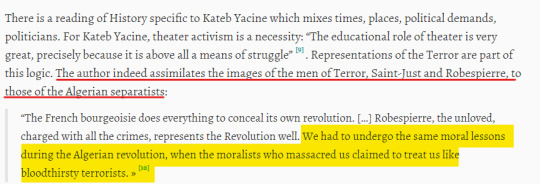
Note: Yacine’s mediations on Francophone historiography and moralization of the “Reign of Terror”; direct resonances for Algerian revolutionaries on the role of terrorism in struggles for national indepedence from French colonialism

Note: Yacine’s explicit affirmation of Robespierre as the original and legitimate symbol of an enlightened French republic-yet-to-come, in spite of the revolution’s failure to manifest it.

Note: Robespierre attempting to reach Karl Marx prior to his confrontation with de Gaulle, the latter of whom mocks Robespierre as “[having] nothing of a man of action.” Empower by his meeting with Marx, Robespierre responds to this attempted demasculation [perhaps paralleling popular portrayals of his feud with Danton?] with, “And you, the great de Gaulle, you have subdued the generals, but you have not seen Second Lieutenant Le Pen, who is threatening to take power” (Yacine in Pellerin, pp27).
#french revolution#maximilien robespierre#robespierre#kateb yacine#Robespierre the Sans-Culotte or the Ghost of Parc Monceau#there is more but this is some of the sections I thought would be interesting to put together + my own brief notes#archives#edited for clarity's sake#frev
74 notes
·
View notes
Text
Greta Garbo - The Face of the Century
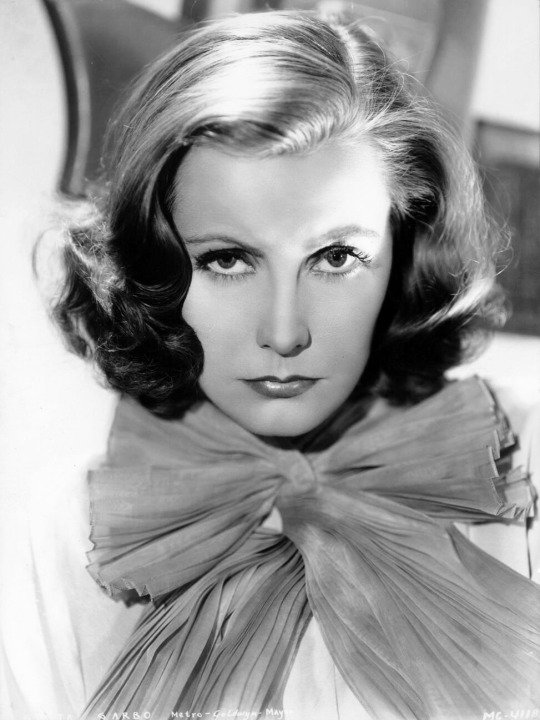
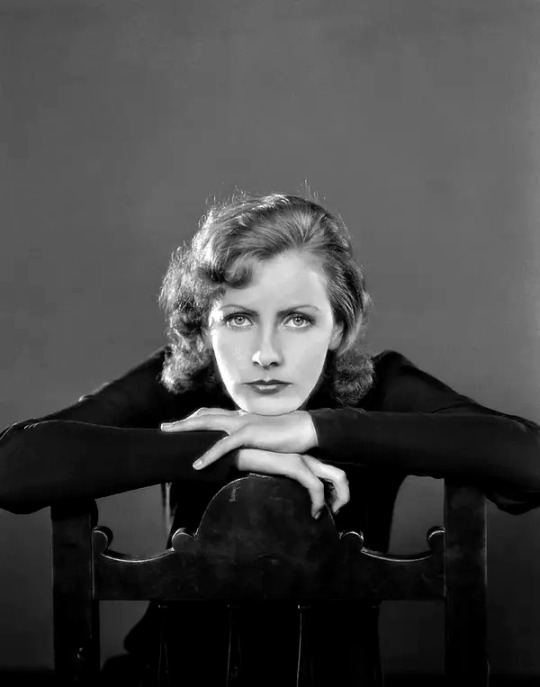


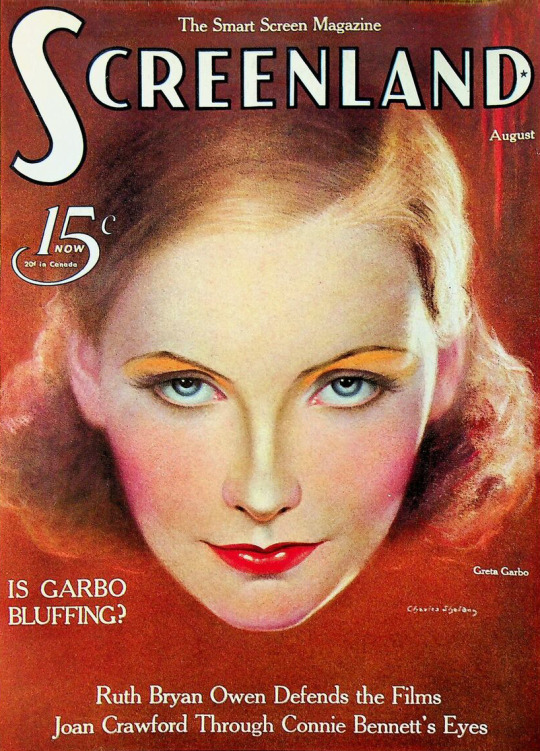

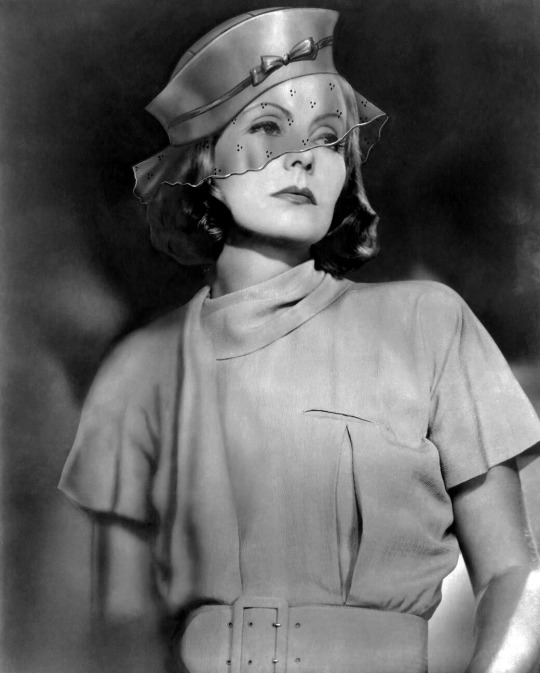
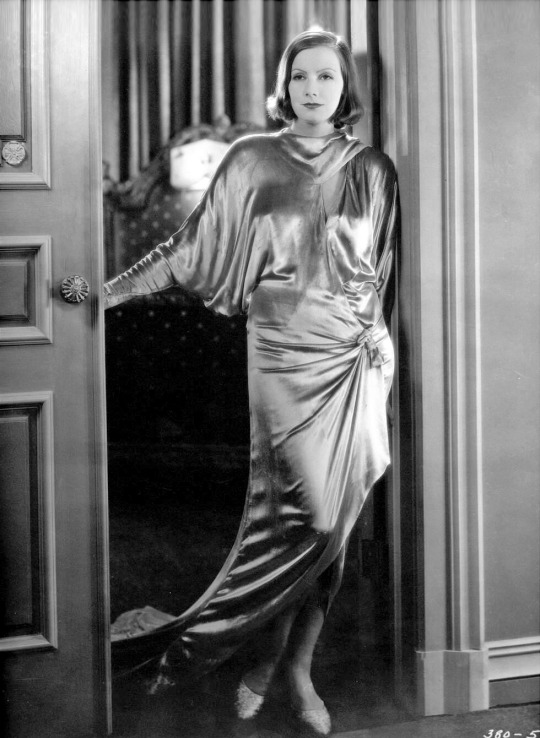
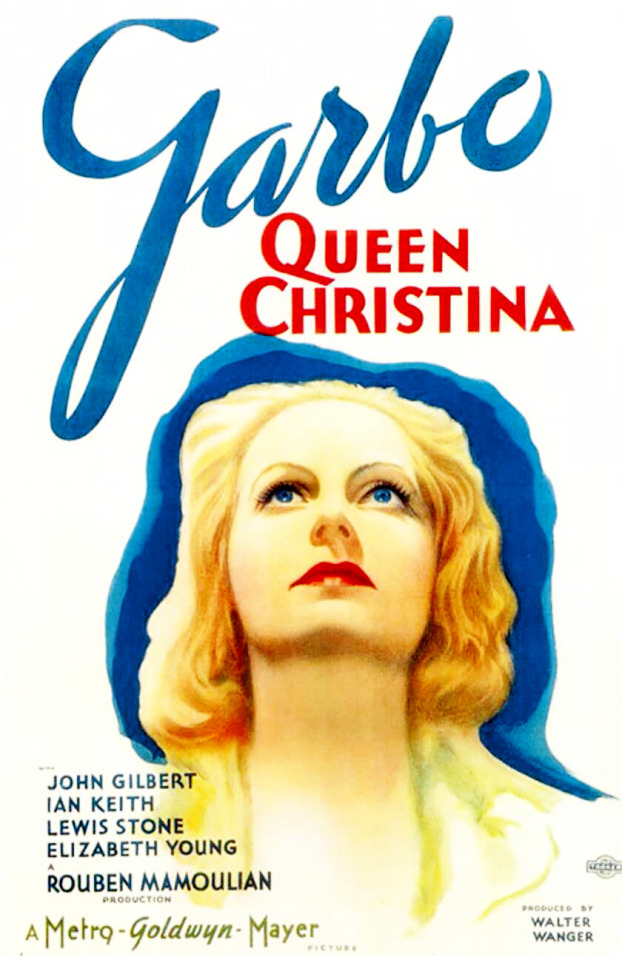



Greta Garbo (born Greta Lovisa Gustafsson in Stockholm, Sweden on 18 September 1905) was a Swedish-born actress who built her global appeal on a carefully maintained mystique during her short career. Called "The Face of the Century," she is regarded as one of the Hollywood's greatest beauties.
Garbo was born into a poor family and dropped out of school at 13 to take care of her father. His death deeply affected her and promised to make a life for herself that was void of financial hardship.
Following her father's death, Garbo worked as a salesperson at PUB department store. After modeling for the store's catalogues, she earned a more lucrative job as a fashion model, which led to a role in her first film in 1922.
She then earned a scholarship at the Royal Dramatic Training Academy, where she met Finnish director Mauritz Stiller, who became her mentor. Louis B. Mayer of Metro-Goldwyn-Mayer wanted Stiller in Hollywood. The director agreed to a contract with one condition: Garbo. Reluctantly, Mayer inked her a deal, too.
She made her first MGM film in 1926, and by 1928, had become MGM's highest box-office star with A Woman of Affairs. She followed it up with several more hits, including Camille (1936). Her career slowed down in the 1940s and retired at 35.
After retiring, Garbo declined all opportunities to appear onscreen, shunned publicity, and led a private life. She died, aged 84, in a New York, as a result of pneumonia and renal failure.
Legacy:
Nominated three times for the Academy Award for Best Actress for her performances in Romance (1930), Camille (1936), and Two-Faced Woman (1941)
Presented an Academy Honorary Award in 1955
Received the New York Film Critics Circle Award for Best Actress twice: Anna Karenina (1935) and Camille (1936)
Won the National Board of Review Best Acting Award three times: Camille (1936), Ninotchka (1939), and Two-Faced Woman (1941)
Was the highest-paid star at MGM for most of her career
Won the Photoplay Awards - Best Performances of the Month for a record eight times: May and December 1926, February and November 1927, March and September 1928, and January and March 1929
Won Best Actress for Anna Christie (1930) and Queen Christina (1933) from Picturegoer Awards
Listed by the Motion Picture Herald as one of America’s top-10 box office draws from 1930 to 1932
Was one of the subjects of French composer Charles Koechlin's "Seven Stars Symphony" (1933)
Granted the Swedish royal medal Litteris et Artibus in 1937
Is one of the celebrities whose picture Anne Frank placed on the wall of her bedroom in the “Secret Annex” in 1942
Voted "Best Actress of the Half Century" in a 1950 Daily Variety opinion poll
Named “the most beautiful woman that ever lived” in 1954 by Guinness World Records
Given the George Eastman Award by George Eastman House in 1957
Has appeared on many postage stamps from, among others, Swedish Posten in 1980 and 2005, Correos de Cuba in 1995, Deutsche Post in 2001, US Postal Service in 2005, Poșta Română issue in 2005, and Australia Post in 2008,
Made a Commander of the Swedish Order of the Polar Star by order of King Carl XVI Gustaf in 1983
Depicted in the film Garbo Talks (1984)
Awarded the Illis Quorum by the government of Sweden in 1985
Had a star was named after her in 1985
Has appeared on commemorative coins from Germany in 1994, France in 1995, and Sweden in 2005
Listed 25th in Entertainment Weekly’s 100 Greatest Movie Stars of All Time in 1998
Ranked #38 in Empire's Top 100 Movie Stars in 1997
Has had a museum, the Garbosällskapet, dedicated to her in Högsby since 1998
Named the 5th-greatest female star of classic Hollywood cinema in 1999 by the American Film Institute
Inducted in the Online Film and Television Association Hall of Fame in 2002
Ranked #8 in Premiere magazine’s 50 Greatest Movie Stars of All Time in 2005 and #25 in 100 Greatest Performances of All Time in 2006 for Ninotchka (1939)
Honored by Stockholm City Council in 1992 with a square, Greta Garbos Torg, and a bust of her likeness in 2009
Honored by Norwegian Air Shuttle as its "Tail-fin Hero" on its Boeing 787 Dreamliner in 2016
Featured on 100-krona banknote by Sveriges Riksbank since 2018
Featured in an exhibit at the Postmuseum in 2005, the Belmacz in 2013, the Fotografiska in 2016, the Staley-Wise Gallery in 2016, and Galerie56 in 2023
Honored as Turner Classic Movies Star of the Month for April 2019
Honored with a statue of her, "Statue of Integrity," in 2016, located in the forest in Härjedalen
Has a star on the Hollywood Walk of Fame at 7021 Hollywood Boulevard for motion picture

#Greta Garbo#Garbo#The Face of the Century#La Divina#The Swedish Sphinx#Silent Films#Silent Movies#Silent Era#Silent Film Stars#Golden Age of Hollywood#Classic Hollywood#Film Classics#Classic Films#Old Hollywood#Vintage Hollywood#Hollywood#Movie Star#Hollywood Walk of Fame#Walk of Fame#Movie Legends#Actress#hollywood actresses#hollywood icons#hollywood legend#movie stars#1900s
4 notes
·
View notes
Text
+ I've been busy doing extra assignments and work for another job within the government to transfer to that is much more of a better fit- my next step is to take two forty-five minute French tests, so please light a candle that my French actually holds up in a workplace capacity. 🥲
(Also, I find out about scholarships on Monday, and get my tax return coming up next week hopefully <3)
3 notes
·
View notes
Text
Character Bio

Demographics
Faceclaim: Zoe Colletti
Full name: Hope Nicole Jones
Birth date: June 16, 1999
Age: 25 years old
Zodiac: Gemini
Ethnicity: White
Nationality: American
Spoken Languages: English, non fluent French
Height: 5'3 / 160cm
Weight: 160 lbs/ 73 kilos
Eye Color: Hazel Green
Hair Color: Chestnut Brown
Identifying Marks: Freckles all over her body, most prominent on her face, arms and shoulders. A small black stick n poke butterfly tattoo on her left hip. Pierced ears.
Scars: A few she got on accident from falls and such, a large scar on her left calf from being tripped down the bleachers in high school. Small self harm scars on her thighs that have been healed for a few years. A long thin scar down her middle torso from her clavical to navel, as well as scars on her knees and elbows, courtesy of her kidnapper.
Occupation: Pharmacy Technician
Gender Identity/Pronouns: Female, she/her
Sexual Orientation: Bisexual, though she's on the ace spectrum due to trauma.
Backstory
Hope grew up in a small town in Indiana USA. Her father wasn't around much and her mom basically raised her on her own. Her brothers are both nearly a decade older than her and she was the only child in the house by the time she was 9.
She's always been interested in movies, theatre, musicals, and modeling. She'd beg her mother to buy her the magazines on the rack at the grocery store just so she could look at the pretty women.
Despite having such a high regard for herself at a young age, she was still relentlessly bullied in grade school. By the time she hit high school she became a bully herself, often talking down to others and developing a superiority complex.
Hope did have a few friends though, and doesn't consider her experience in school to be that awful. She says it could have always been worse.
She graduated on the honor roll and was class president of her senior year. Despite being able to get a free ride scholarship to Indiana University she turned it down to pursue acting. She tried online college but eventually dropped out.
She remained at her job at the local movie theatre and started to promote herself on social. This brought the attention of a Canadian man, Jonathan Weaver. Or at least that's what he called himself.
He easily manipulated her, making promises of getting her into a modeling career. He began teaching her French and would send her money to buy specific clothes to model for him. Eventually he convinced her to move to Canada.
Hope's mother begged her not to go, but of course Hope didn't listen.
When Hope stepped out of the release gate at the airport, she met the man she'd been talking to for nearly a year. He looked like how he did in the photos, and acted like how he did online.
Unfortunately for her, he drugged the bottle of water he handed to her. He led her back to his apartment, chained her to a radiator and held her captive for 2 weeks. Dressing her up, photographing her, and raping her.
Hope was able to break a pipe and get free one day while Jonathan was out of the apartment. She ran from the building begging for help, barefoot and half naked.
Something in her broke that day and while she was being questioned by police, she lied and gave them false information. Hope wanted revenge on Jonathan, and not the kind that jail time could provide.
Along the way, she started becoming interested in the websites and forums she was posted on while in captivity. Her mind further broke, and she wanted to inflict that kind of pain on others so she wouldn't have to feel it herself.
Hope began making her own content, with any poor girl she could find. She started branching out and soon began to kidnap men.
After some research and digging she found out that a man named Jonathan Weaver didn't exist; At least none that looked like the man that tortured her. The apartment she was held in was abandoned and owned by the local government. There was no trace of her kidnapper.
She remained in Canada and got her citizenship, hoping to one day run into 'Jonathan' and give him a taste of his own medicine.
She works at a shady pharmacy in a downtown area and gets away with stealing small amounts of narcotics. She's gotten good at drugging people inconspicuously and is very active in the nightlife of her city. She's a regular at most of the bars and clubs.
Personality
Good personality traits: Ambitious, confident, friendly, intelligent, loyal, persistent, imaginative, bubbly, cautious
Bad personality traits: argumentative, stubborn, perfectionist, obsessive, spoiled, deceitful, untrusting, anxious
Sense of humor: 'dark', sarcastic, and dry.
Character’s greatest fear: going through what she went through all over again.
Life philosophy: We cannot simply sit and stare at our wounds forever - Haruki Marukami
Greatest strength: Her intelligence and quick wit.
Greatest vulnerability or weakness: Her desire to be loved and her desire for revenge.
Biggest regret: Letting herself be manipulated by a man she'd met online and allowing herself to fall victim to him. She considers herself smart, and felt so stupid when she woke up in that apartment.
Character’s darkest secret: her apathy towards human life. She tries to seem compassionate but in reality she couldn't care less what happened to most people. Hope assisted her friend in committing suicide the summer before their freshman year of high school. She helped string the rope up, and pushed the bucket from under her friend's feet. Hope then cut her down and held her until she turned blue. She has had an odd relationship with death ever since.
MBTI: ENTJ (Commander) is a personality type with the Extraverted, Intuitive, Thinking, and Judging traits. They are decisive people who love momentum and accomplishment. They gather information to construct their creative visions but rarely hesitate for long before acting on them.
Character Alignment: Chaotic Neutral- A chaotic neutral character is an individualist who follows their own heart and generally shirks rules and traditions. Although chaotic neutral characters promote the ideals of freedom, it is their own freedom that comes first; good and evil come second to their need to be free.
Enneagram Type: Type 4 The Individualist- The Sensitive, Introspective Type; Expressive, Dramatic, Self-Absorbed, and Temperamental
Family and Friends
Hometown: Orleans, Indiana, USA
Current Residence: Canada
Pets: none but she'd love to have a cat, and maybe some chickens.
Mother/Relationship with her: Amazing when she was a child but once she hit high school it became somewhat strained. Hope always thought she knew what was best for herself and would ignore her mother or start small arguments over things.
Father/Relationship with him: Nonexistent. He was never around and eventually went missing. No negative feelings, just no feelings at all.
Siblings/Relationship with them: 2 brothers James and Brian, 8 and 10 years older than her. It's a pretty decent relationship with both but there's such a large age gap that they don't have much in common and don't talk outside of pleasantries and catch ups during holidays.
Spouse(s)/Relationship with them: N/A
Children/Relationship with them: N/A
Likes and Dislikes
Favorite Color: Pink, green and purple
Least favorite color: neon green
Favorite Music: pop, indie, and r&b
Least Favorite Music: Post modern country, dubstep
Favorite Food: strawberry cake, cheeseburgers, sesame chicken.
Least Favorite Food: any kind of leafy green. She is adament that she's not a rabbit. She tolerates spinach but only if it's in something like a dip or sandwich. Salads are off the table.
Favorite Genre: Romcoms, documentaries/nonfiction, horror/thriller
Least Favorite Genre: Action, sci-fi although there's exceptions to the rule. She enjoys Star Wars but doesn't like superhero movies.
Habits
Hobbies: reading, shopping, playing dress up, drawing/painting, dancing, jigsaw puzzles and watching movies
Smokes: She hates the smell of cigarettes and weed and is quick to preach the negative effects that smoking causes. She does smoke socially if it will get her close to a new victim though.
Drinks: Hope holds her alcohol well and it takes a few drinks for her to start feeling it. She really likes rum and coke, peach margaritas and lemon drop shots.
Other drugs: She steals half empty vials of morphine from her pharmacy and finds that's the only way she can sleep nowadays. She's done cocaine and molly on occasion with potential victims, but doesn't like that they skew her perception.
Nervous tics: Twirls her hair, bites her nails and picks at her skin when she's anxious or deep in thought. If she's wearing a long sleeve shirt or sweater she'll often pull the sleeves over her hands and pick at the threads.
Traits
Optimist or pessimist?: She tries to be optimistic, but sometimes all she can see is the negativities.
Introvert or extrovert?: Mostly extroverted, but she really likes her alone time too.
Daredevil or cautious?: She was always cautious, and then the one time she decided to take a risk it ended badly, so she's back to walking on eggshells again.
Logical or emotional?: She'd say that logic rules her, but she's quick to fly off the handle if she thinks someone is using her or making fun of her.
Disorderly and messy or methodical and neat?: There is a method to her chaos. It appears messy but it's definitely not dirty. She knows where everything is at and hates when people try to help her clean up.
Prefers working or relaxing?: Hates working unless it's something she wants to do. If it doesn't strike her interest then she wants no part in it.
Confident or unsure of himself/herself?: Acts confident, though there is a little insecurity deep down. Especially about her place in the world. She always trusts her intelligence though.
Animal lover?: Yes, she loves all animals especially cats.
4 notes
·
View notes